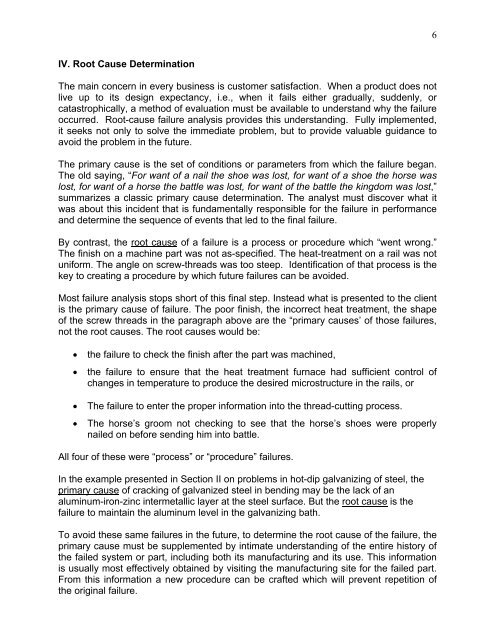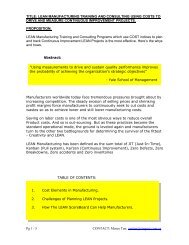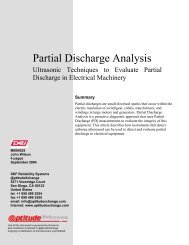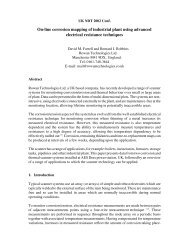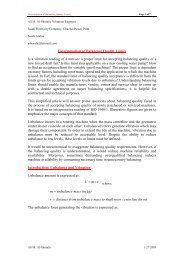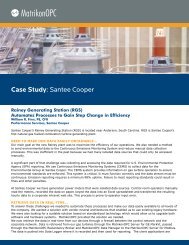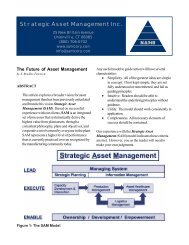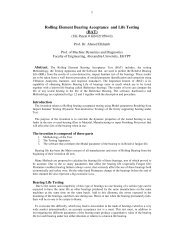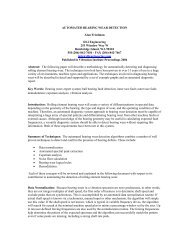A Re-Examination of Failure Analysis and Root Cause Determination
A Re-Examination of Failure Analysis and Root Cause Determination
A Re-Examination of Failure Analysis and Root Cause Determination
- No tags were found...
You also want an ePaper? Increase the reach of your titles
YUMPU automatically turns print PDFs into web optimized ePapers that Google loves.
6IV. <strong>Root</strong> <strong>Cause</strong> <strong>Determination</strong>The main concern in every business is customer satisfaction. When a product does notlive up to its design expectancy, i.e., when it fails either gradually, suddenly, orcatastrophically, a method <strong>of</strong> evaluation must be available to underst<strong>and</strong> why the failureoccurred. <strong>Root</strong>-cause failure analysis provides this underst<strong>and</strong>ing. Fully implemented,it seeks not only to solve the immediate problem, but to provide valuable guidance toavoid the problem in the future.The primary cause is the set <strong>of</strong> conditions or parameters from which the failure began.The old saying, “For want <strong>of</strong> a nail the shoe was lost, for want <strong>of</strong> a shoe the horse waslost, for want <strong>of</strong> a horse the battle was lost, for want <strong>of</strong> the battle the kingdom was lost,”summarizes a classic primary cause determination. The analyst must discover what itwas about this incident that is fundamentally responsible for the failure in performance<strong>and</strong> determine the sequence <strong>of</strong> events that led to the final failure.By contrast, the root cause <strong>of</strong> a failure is a process or procedure which “went wrong.”The finish on a machine part was not as-specified. The heat-treatment on a rail was notuniform. The angle on screw-threads was too steep. Identification <strong>of</strong> that process is thekey to creating a procedure by which future failures can be avoided.Most failure analysis stops short <strong>of</strong> this final step. Instead what is presented to the clientis the primary cause <strong>of</strong> failure. The poor finish, the incorrect heat treatment, the shape<strong>of</strong> the screw threads in the paragraph above are the “primary causes’ <strong>of</strong> those failures,not the root causes. The root causes would be:• the failure to check the finish after the part was machined,• the failure to ensure that the heat treatment furnace had sufficient control <strong>of</strong>changes in temperature to produce the desired microstructure in the rails, or• The failure to enter the proper information into the thread-cutting process.• The horse’s groom not checking to see that the horse’s shoes were properlynailed on before sending him into battle.All four <strong>of</strong> these were “process” or “procedure” failures.In the example presented in Section II on problems in hot-dip galvanizing <strong>of</strong> steel, theprimary cause <strong>of</strong> cracking <strong>of</strong> galvanized steel in bending may be the lack <strong>of</strong> analuminum-iron-zinc intermetallic layer at the steel surface. But the root cause is thefailure to maintain the aluminum level in the galvanizing bath.To avoid these same failures in the future, to determine the root cause <strong>of</strong> the failure, theprimary cause must be supplemented by intimate underst<strong>and</strong>ing <strong>of</strong> the entire history <strong>of</strong>the failed system or part, including both its manufacturing <strong>and</strong> its use. This informationis usually most effectively obtained by visiting the manufacturing site for the failed part.From this information a new procedure can be crafted which will prevent repetition <strong>of</strong>the original failure.


